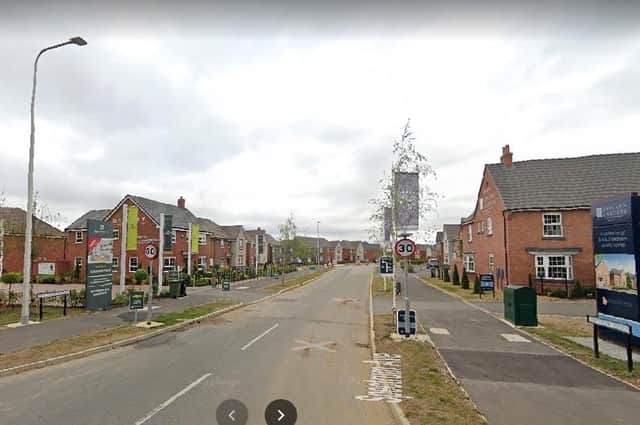Here we grow again... borough council sets ball rolling on review of controversial Local Plan


The plan became a hot topic in 2016 with the council refusing to acknowledge the number of homes was calculated before the effects of Brexit were known and were possibly worth a rethink – and ran into major opposition when it attempted to shift a share of Coventry overspill housing to Lodge Farm near Grandborough and Willoughby.
While a massive campaign saw off the latter, the questions about housing numbers remained and plans for the big chunk of 5,000 homes between Dunchurch, Bilton and Cawston foundered until Homes England stepped in to fund the all-important link road that will take the pressure off Dunchurch crossroads and open up the fields that a variety of developers have their eyes on.
Advertisement
Hide AdAdvertisement
Hide AdThat road is yet to receive planning permission but is in the works – with the only notable changes in South-West Rugby thus far being the homes off Ashlawn Road and the warehouses at Thurlaston.
The sight of those new giant structures near the M45/A45 roundabout has certainly revived interest in the current plan but at yesterday’s, Monday’s, cabinet meeting, borough councillors agreed to push on with a full review of it.
Campaigners have already hit out that the process outlined in documents that will now go to next week’s full council meeting will open the door for more sites to be suggested for homes, inevitably putting new areas of open space at risk – and maybe, in their view, another attempt at Lodge Farm.
A review of the plan is a normal part of the process and could address major gaps in the existing one – such as the lack of a policy on Houses in Multiple Occupation – but the issue of housing numbers remains confused.
Advertisement
Hide AdAdvertisement
Hide AdA key assessment for the local authorities of Coventry and Warwickshire on housing and economic development – known as HEDNA and included in the cabinet report – highlights the recent recognition that there is great uncertainty about the actual population of Coventry and the likelihood that it has been overestimated in previous calculations.
That calls into question the accuracy of numbers being used throughout and as Lib Dem leader Cllr Jerry Roodhouse said at Monday’s meeting could allow for lower numbers, a position that was echoed in a statement released by neighbouring authority Nuneaton and Bedworth Borough Council on November 25.
It said the HEDNA for Nuneaton and Bedworth gave them the opportunity to reduce the number of new homes needed each year. Its planning portfolio holder Cllr Richard Smith said: “We believe the figure we are proposing for housing growth reduces the rush to new homes we have seen in recent years under the current borough plan, and is much more realistic to deliver the right number of homes in the right places with no further loss of precious green belt land.”
The numbers issue is bound to be a key point of debate at Rugby’s full council next Wednesday, December 14 and the report going forward is available in the agenda papers for last night’s cabinet meeting.
Advertisement
Hide AdAdvertisement
Hide AdRugby’s portfolio holder Cllr Ian Picker set out at the meeting why he believed a full review was possible, notably to ensure the council has a valid plan in place to counter future speculative development.
The report said: ‘If the council does not have an up-to-date Local Plan, there is a significant risk that the council’s ability, as the Local Planning Authority to influence and control development will be diminished through the application of the ‘presumption in favour of sustainable development’.
‘This would result in a requirement on the council for new development to be granted planning permission unless it conflicts with the National Planning Policy Framework or the adverse effects would significantly and demonstrably outweigh the benefits.
‘This application of this so-called ‘tilted balance’ would reduce the ability of the council to apply its own planning policies with the potential consequence of developments coming forward that the council would have otherwise considered unacceptable.
Advertisement
Hide AdAdvertisement
Hide Ad‘In these circumstances it is also likely that the council would lose more planning appeals. The longer the gap between the current plan ‘expiring’ in June 2024 and the new plan being adopted the greater the risk’.
The report also highlights a lack of action would affect other key priorities on the climate emergency and on its hopes for Rugby town centre: ‘The council would also not be able to fully deliver and realise its aspirations for the regeneration of the town centre and climate change. The council would also not be able to deliver sufficient jobs across a diverse range of sectors, to meet the needs of its residents in terms of employment but also in terms of attracting inward investment, to drive growth in the borough.
‘The council would also not be able to provide sufficient housing and affordable housing of different sizes and tenures to ensure that residents across the borough have good quality housing’.
A full review such as this comes at a cost, although council leader Cllr Seb Lowe said at Monday’s meeting the cost of a full review was not much more than the option of a partial review.
Advertisement
Hide AdAdvertisement
Hide AdThe full review, going right the way through to an inspector examing it, is estimated at almost £500,000 – including the costs campaigners are not happy about, for a review of the green belt and assessment of new sites put forward, both of which seem to suggest a reduction in the borough’s open spaces.